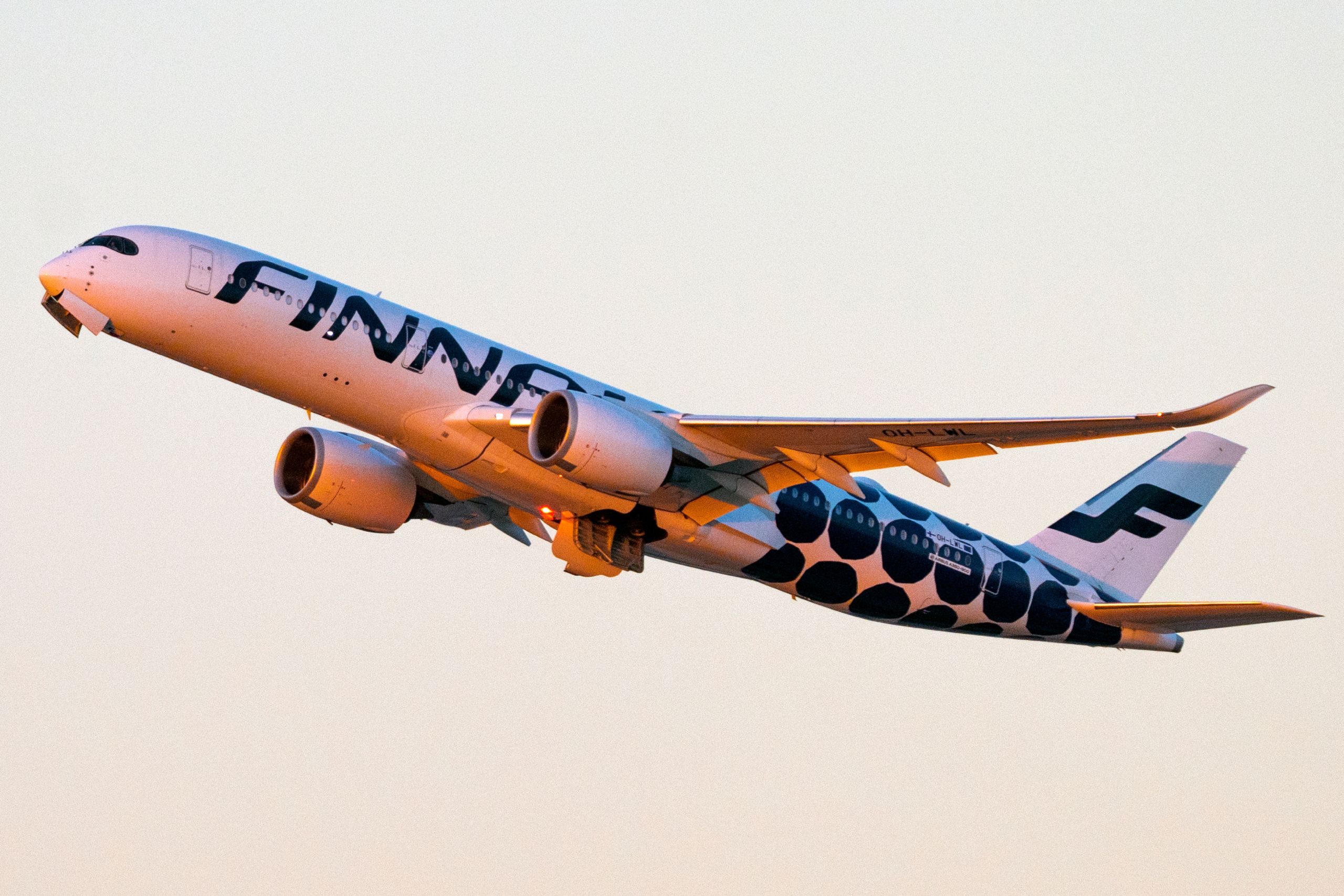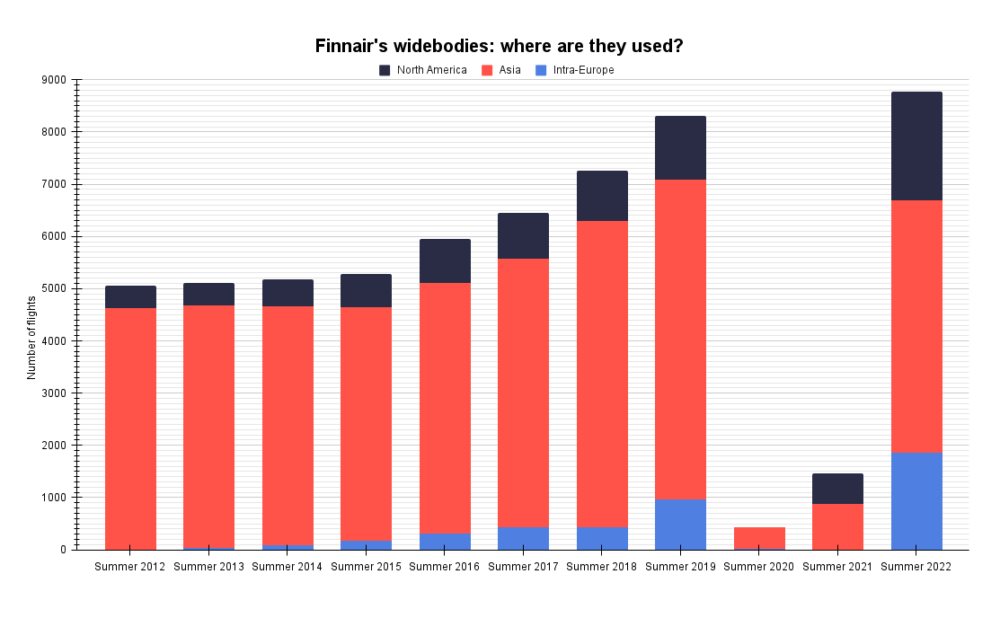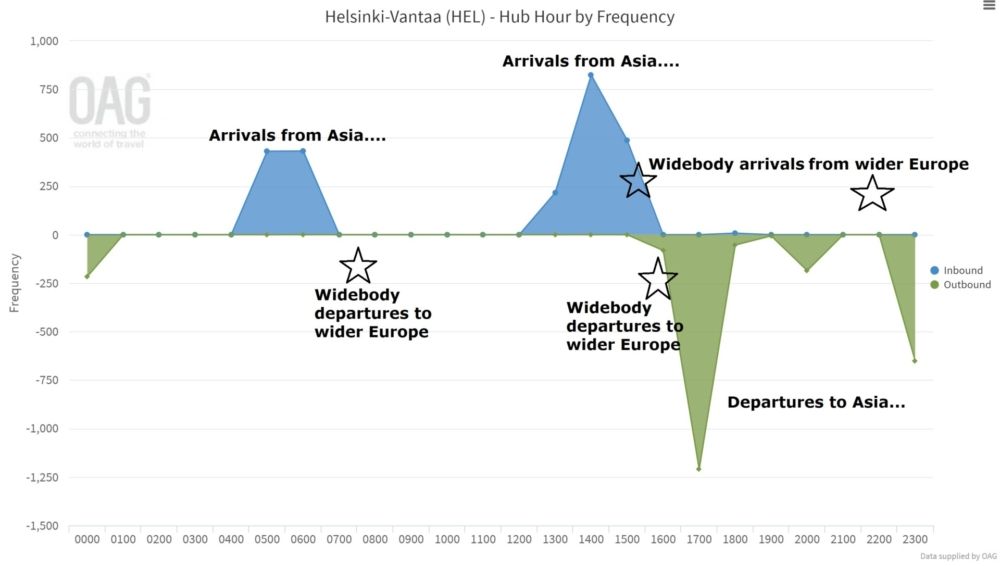Finnair will deploy more widebodies across Europe this summer than ever before. Flights have nearly doubled versus the previous peak, and Amsterdam, Brussels, and London Heathrow will see the carrier's A330s and/or A350s with up to five daily departures. It comes as Finnair to Asia – by far its longest long-haul market – remains down significantly.
Finnair's summer widebodies across Europe
Finnair ordinarily has relatively few widebody services within Europe. They're timed in-between long-haul flights to carry connecting passengers and – importantly – for freight reasons. It also helps with widebody utilization, the same for Turkish Airlines.
Things have changed for this coming summer. Almost 1,900 intra-Europe widebody services are bookable, nearly double the previous peak (+93%). If all summers between 2013 and 2021 are combined, they have only slightly more flights than summer 2022.
As you'd expect, it's driven by Asia, where Finnair's flights remain stubbornly lower than usual (-21%) for obvious reasons. Frequencies have been slashed (Shanghai is once-weekly), and the network cut back. Fewer flights to Asia have freed up capacity for North America (flights up by 72%!), including from Stockholm, and across Europe, the latter's short sectors providing an easy way to keep widebody crew current.
Stay aware: Sign up for my weekly new routes newsletter.
Helsinki to Amsterdam, Brussels, & Heathrow
This summer, Finnair will use widebodies to Heathrow and Amsterdam twice-daily, while Brussels will be served twice-weekly. While the airline's widebodies have served Brussels since 2013 and Heathrow regularly since 2015, they're effectively a new thing for Amsterdam.
Heathrow will again welcome Finnair's twin-aisles from February 23rd, followed by Amsterdam on March 27th and Brussels on March 30th. According to OAG, some 62 days across the summer will have five daily departures, the maximum. On randomly chosen July 2nd, they're scheduled as follows, with all times local:
From Helsinki (organized by departure time from Finland:
- 07:40-09:15: Helsinki to Brussels; AY1541, A330-300
- 08:00-09:10: Helsinki to Heathrow; AY1331, A350-900
- 08:10-09:45: Helsinki to Amsterdam; AY1301, A350-900
- 16:00-17:05: Helsinki to Heathrow; AY1337, A330-300
- 16:15-17:45: Helsinki to Amsterdam; AY1305, A330-300
To Helsinki (organized by arrival time in Finland):
- 10:20-15:15: Heathrow to Helsinki; AY1332, A350-900
- 11:40-15:15: Brussels to Helsinski; AY1542, A330-300
- 11:55-15:15 Amsterdam to Helsinki: AY1302, A350-900
- 18:50: 22:10: Amsterdam to Helsinki: AY1306, A350-900
- 18:10-23:00: Heathrow to Helsinki; AY1338; A330-300
Only Finnair's widebodies are up
The shift in widebody use, while temporary, means that Finnair plans almost 9,000 flights by them this summer, meaningfully surpassing the previous peak.
Intriguingly, widebodies are the carrier's only equipment group to register an increase in flights, up by 6%, possibly helping offset fewer services available. Turboprop flights, by contrast, are down by 22%, narrowbodies by 17%, and regional jets by 8%. Like all airlines, Finnair will be counting the days until normality returns, in every sense of the word.
What do you make of this development? And have you flown Finnair's A350s/A330s? Share your experiences in the comments.



